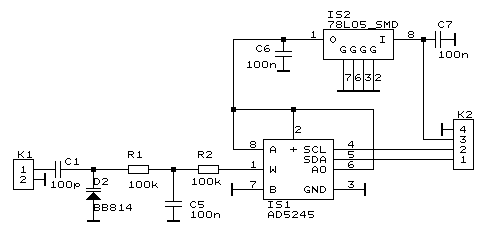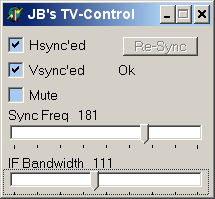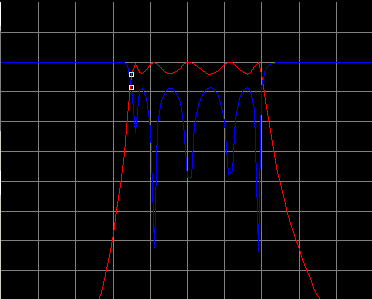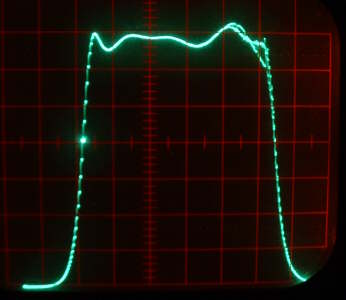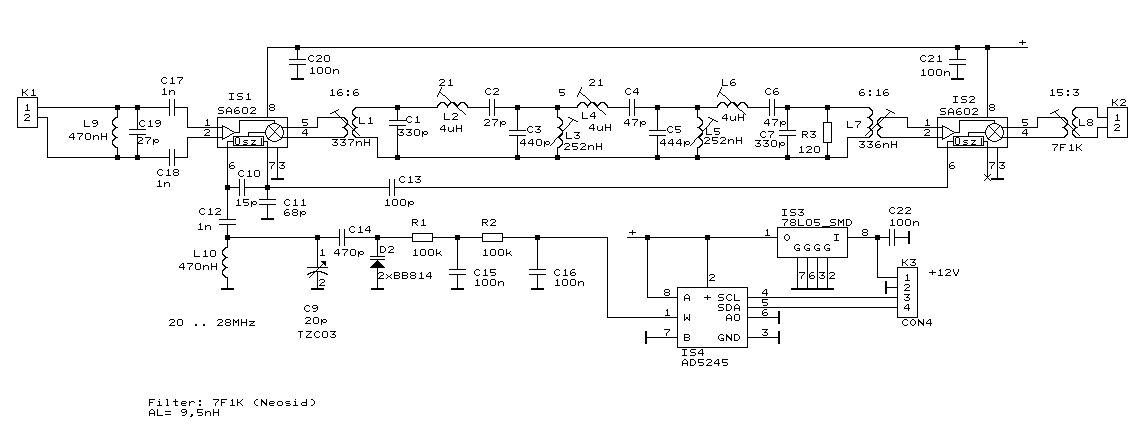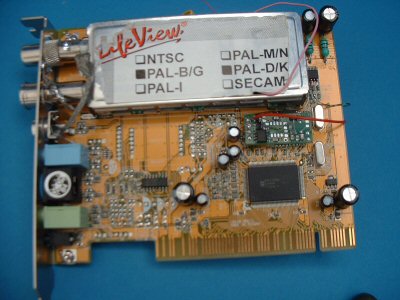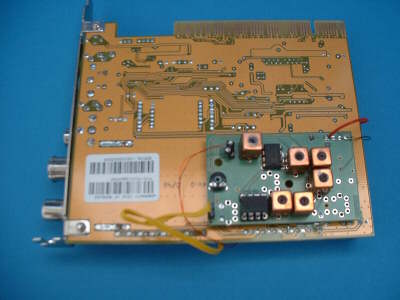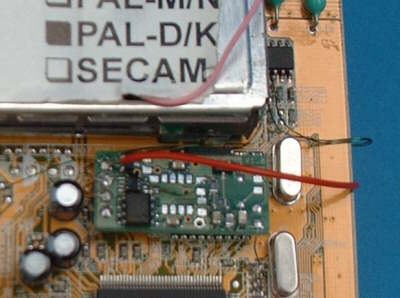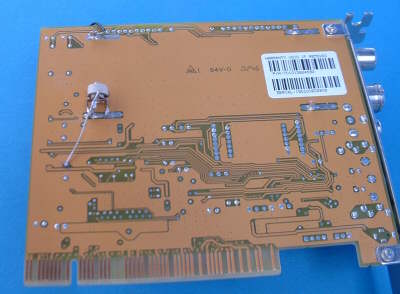The TV card can be switched to free running mode. Transmitted H-Sync and V-Sync are ignored and an orthognal picture appears that slowly moves horizontally but cannot collapse anymore. The speed of movement depends on the TV-card's crystal oscillator. Its frequency can be adjusted slighty so that the picture gets to a near standstill. For this a 10pF capacitor-trimmer needs to be soldered from ground to the 24.576 MHz crystal (photo) , and adjust it to a picture standstill. This is temperature dependend so you may still get slight movement later on. A more elegant solution is a circuit that allows to precisely adjust the standstill with a mouse movement, see below.
|
For switching free running mode on/off I created a small program that only works with TV-cards containing the SAA713x chip. When free running, a click on Re-Sync will for 1 second turn on synchronisation. Click on it at the moment when the TV signal is good, so that the picture can re-align properly on the screen.
In free-run you can even see a picture during strong interferences or very weak reception when using simultanously the Noise Reduction Adaptive Filter Installation: unzip all files into one directory and start TVcontrol.exe |

